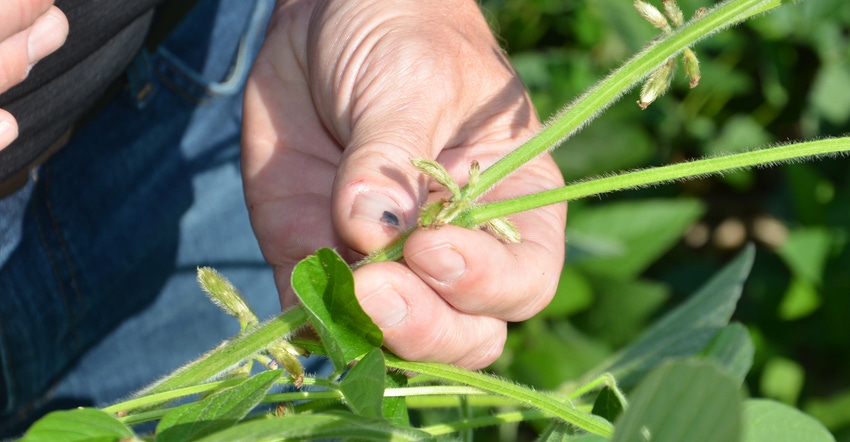
If you practice Integrated Pest Management, you may come up with a different answer for applying fungicides on soybeans than if you rely on trial data. IPM recommends basing pesticide application on economic thresholds for pests and diseases. If you aren’t finding soybean diseases like brown spot and frogeye leaf spot, you might not spray.
By mid-July, reports indicated these two diseases were appearing in certain areas. Whether future weather conditions are favorable for disease may determine if they appear elsewhere.
If you believe that fungicide applications pay, you may be more concerned about timing the application correctly. Steve Gauck, Greensburg, Ind., a regional agronomy manager for Beck’s, is also a farmer.
“I was rather slow to adopt spraying fungicides on soybeans on my own acreage, but there is just too much evidence showing that it pays over time,” Gauck says. “The payoff is consistent.”
Gauck points to data collected through Practical Farm Research at Beck’s to illustrate potential payoff. The PFR team tested eight fungicides at multiple locations over a minimum of three years. All eight produced an average return on investment above costs, ranging from $5.01 to $48.21 per acre.
In order from highest to lowest average net return, they are: Miravis Top, Stratego YLD, Trivapro, Lucento, Priaxor, Miravis Neo, Zolera FX and Delaro 325SC.
Timing matters
The Beck’s PFR team also compared timing of application based on growth stage. After seven years of fungicide application with insecticides, net ROI when the application was made at R3 was $17.68 per acre.
If the application was made earlier, at R2, the net return was negative, indicating an average loss of $3.91 per acre compared to not applying fungicide. Applied later, at R4, the ROI was also negative, at $2.53 per bushel.
“There is a real financial incentive to scout and get timing right,” Gauck says. “We know that 70% of a soybean’s yield potential comes from nodes six through 13 on the main stem. Those nodes are usually present at R3. If you spray too early, they may not all be formed. If you spray late, you’ve already missed part of the window where protection helps.”
Here’s how the Purdue University Corn & Soybean Field Guide defines R3: “Pod is at least ¼ inch long at one of the four uppermost nodes on the main stem with a completely unrolled or flat leaf.”
At R2, there is an open flower on one of the two uppermost nodes on the main stem with a completely unrolled leaf, but no pods yet. At R4, a pod is at least ¾ of an inch long at one of the four uppermost nodes. Carry your ruler as you scout!
Bottom line
Gauck acknowledges that the primary job of a fungicide is preventing or mitigating disease pressure. However, he believes fungicides provide other benefits. Exactly how much protection a fungicide provides other than disease control may depend on the fungicide’s mode of action and how it works.
Other possible benefits that Gauck recognizes include better water use efficiency, improving stress tolerance and increasing the window for pod fill by keeping plants healthier.
“The bottom line is that for a production practice, the results when measured in terms of return on investment over all costs is surprisingly consistent,” Gauck concludes.
About the Author(s)
You May Also Like




